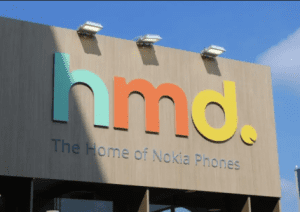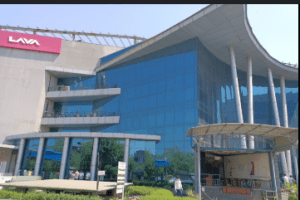Noida/Finland: In a transformative move aimed at reshaping India’s broadcast and mobile connectivity space, global smartphone maker HMD Global and Indian manufacturer Lava are set to introduce Direct-to-Mobile (D2M) technology-enabled smartphones. In a strategic partnership with Tejas Networks (a Tata Group company) and FreeStream, a government-backed broadcast tech startup, this initiative reflects India’s growing ambition to create a resilient, free, and accessible communication infrastructure.
This development is aligned with the Digital India mission, emergency preparedness goals, and the Atmanirbhar Bharat initiative, especially in rural and underserved regions.
📡 What is D2M Technology and Why Is It Revolutionary?
Direct-to-Mobile (D2M) refers to a new communication protocol where video and data content is transmitted directly from terrestrial TV towers or satellite-based infrastructure to smartphones—bypassing mobile networks and data charges. It merges traditional broadcast technology with modern mobile delivery, similar to how FM radio operates today.
🚀 Key Capabilities of D2M:
-
Watch live TV and content without internet or SIM.
-
Receive real-time alerts even in remote or disaster-struck areas.
-
Offload video streaming from telecom networks to reduce load.
-
Function during network blackouts, ensuring uninterrupted public safety communication.
The D2M tech was developed with core input from IIT Kanpur, Prasar Bharati, and Department of Telecommunications (DoT) through pilot projects that demonstrated strong signal reception even in areas with no cellular coverage.
🔗 Strategic Players and Their Roles
-
 HMD Global (Nokia’s parent firm):
HMD Global (Nokia’s parent firm):-
Will integrate D2M chipsets in upcoming smartphones.
-
Known for durable, secure Android devices suited for mass markets.
-
-
Lava International:
-
A Make-in-India success story.
-
Will mass-produce D2M-enabled devices for rural and Tier II/III markets.
-
Supports Digital India with indigenous tech.
-
-
Tejas Networks (Tata Group):
-
Offers D2M hardware infrastructure including broadcast antennas, baseband units.
-
Responsible for national-level network integration.
-
-
FreeStream:
-
Backend software provider building the middleware for D2M.
-
Backed by Reliance Jio Platforms, Bharti Airtel, and C-DOT.
-
Will manage user interface, emergency alert system, and content caching.
-
🛠️ Implementation Roadmap and Product Launch
According to industry sources, D2M-enabled smartphones will debut in India by Q3 2025, likely priced competitively around ₹10,000–₹15,000. The rollout will be phased:
-
Phase 1: Government apps like DD News, AIR, and disaster management tools will be pre-installed.
-
Phase 2: Integration with streaming partners for free OTT-style public content.
-
Phase 3: Monetization via freemium content and private channel partnerships.
These phones will work across 4G and 5G, while D2M will run independently in parallel using UHF spectrum, freeing up mobile data for mission-critical services.
🧩 Geopolitical, Economic, and Social Implications
-
Disaster Preparedness:
-
D2M phones act as lifelines during floods, earthquakes, or war, ensuring uninterrupted alerts.
-
Helps build a non-reliant emergency communication layer, independent of telecoms.
-
-
Digital Sovereignty:
-
Reduces India’s dependency on foreign platforms for broadcast and mobile distribution.
-
Fosters self-reliance in communication and surveillance infrastructure.
-
-
Rural Empowerment & Education:
-
Bridging the digital divide in Bharat vs India.
-
Enables free access to educational videos and farming advisories without data.
-
-
Telecom Relief:
-
Video traffic constitutes over 70% of data usage. Offloading this via D2M reduces telecom congestion, especially during events like cricket matches or elections.
-
-
Cybersecurity Advantage:
-
D2M systems are more resilient to cyber attacks since they use dedicated broadcast frequencies and don’t rely on the internet.
-
📈 Challenges and Points of Caution
-
Device Cost Parity: Integration of extra hardware may impact device pricing in budget segments.
-
Awareness & Adoption: Mass awareness campaigns will be crucial to push D2M usage.
-
Content Ecosystem: Public content might lack appeal unless private broadcasters join the D2M fold.
-
Spectrum Policy: Continued support from the Ministry of Information and Broadcasting will be essential to free up spectrum and infrastructure.
✅ Conclusion: The Future of Indian Mobile Communication


If executed well, it has the potential to redefine broadcasting, improve national emergency preparedness, and democratize access to digital services across India.
For more detailed insights, refer ton press release by Business Wire- India’s Direct-to-Mobile (D2M) Phones – Free Stream Technologies, Lava International and HMD Partner Ahead of Field Trials
For more real time updates, visit Channel 6 Network.

